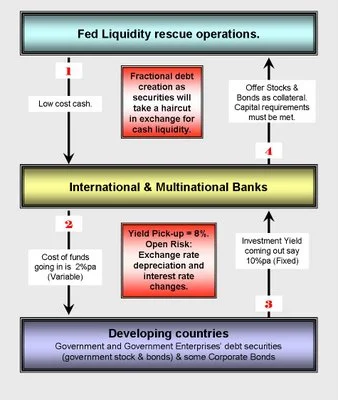Monday, July 4, 2011
The Operations "carry trade" Part-1
The port - or carry trade - is a relatively simple operation which is to take advantage of a gap in performance between asset classes: asset borrowed at low rates are placed in high-yield assets. Today, the phenomenon has grown strongly on the yen, becoming problematic. that evidenced by recent calls from the President of the Eurogroup, Jean-Claude Juncker, and many analysts, asking the President of the Bank of Japan to reconsider its policy. They do not seem to find echoes in Japan, but show an awareness of the danger generated. However, failure to report the problem exists at the conference of the G8 does not seem to be in line for a quick response.
The carry trade exchange, a concept theoretically unworkable in the long term. A currency carry trade involves borrowing in a currency in a country where rates are low, to change the money into a currency "strong" and place it high (treasuries ...). Theoretically, the operation of the arbitration process is ephemeral because the markets are efficient (at each moment is a financial security to its price) and rebalance through exchange rates and interest rates.
In addition, because of the rule of parity uncovered interest rate, the interest of such an operation is theoretically zero. Indeed, a difference in rates between two countries reflects inflation differentials. But these differences are offset by a realignment of exchange rates. Thus, when an investor speculates on the difference in rates observed between the two countries, he loses the same value on the exchange. That said, sometimes the law does not hold in practice and that the currencies of countries with low rates and suffer the opposite effect depreciate. This is the case of the yen, which reached historic lows against the U.S. dollar and the euro.
Labels:
Carry Trade,
currency,
currency trade
Subscribe to:
Post Comments (Atom)

0 comments:
Post a Comment
Note: Only a member of this blog may post a comment.